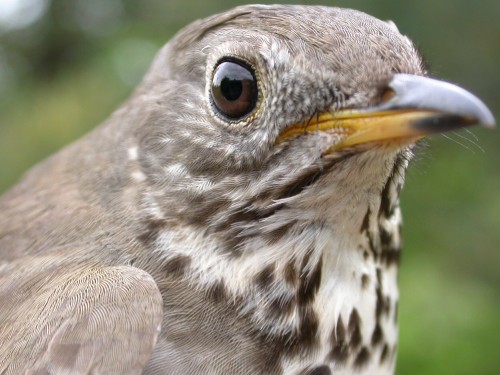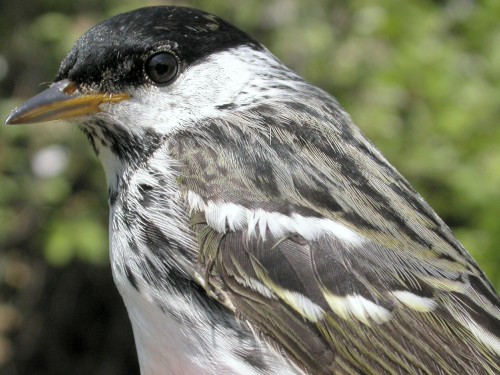|
McGILL BIRD OBSERVATORY |
|||||||||||||||||||||||||||||||||||||||||||||
Welcome to the McGill Bird Observatory weekly report. Click here for a complete listing of our archives. Comments or questions are welcome at mbo@migrationresearch.org.
Bander-in-charge:
Marcel Gahbauer Notes: Our first full spring season came to an end this week, but not without some more highlights. Monday morning we had a good push of late migrants, including at last our first Grey-cheeked Thrush - a bird which, in combination with many articles read over the past week, convinced us that last Friday's thrush was indeed a Bicknell's. Also coming through the same day we had a Swainson's Thrush and Yellow-bellied Flycatcher, bringing our season total of species banded to over 60. Tuesday it suddenly felt like summer, and the birds reacted accordingly - most of the more northern migrants headed off overnight, with only a few lingering individuals still around for the morning. One of those was a Wilson's Warbler with the most incredibly bulging fat deposits we've seen all spring - he clearly had a long way to go yet, and was prepared for the flight! We wrapped up for the season with an American Redstart (a local breeding male) and a Blackpoll Warbler (one of the latest migrants still trickling past). Meanwhile, an oddly hollow call in the distance turned out to be our first Yellow-billed Cuckoo. The last three days of the season were decidely more summer-like than spring-like, with temperatures around 30 Celsius each afternoon and an abundance of mosquitoes throughout the site. With migration mostly over, the number of species in the area has stabilized around 50, with around 80% of them seen almost daily. We will keep track of the local population through the summer with census at least three days per week, and will resume migration monitoring in August.
|


